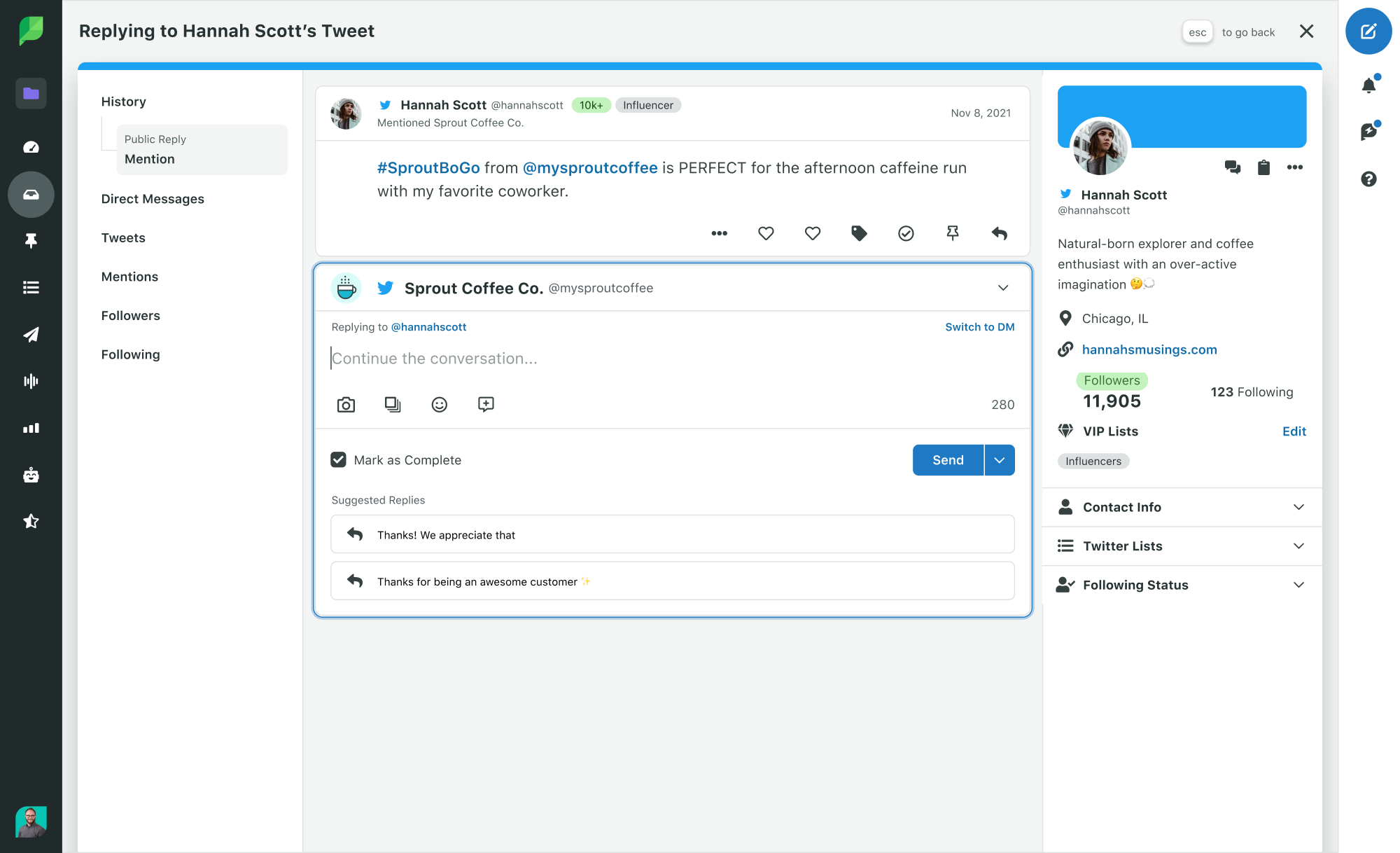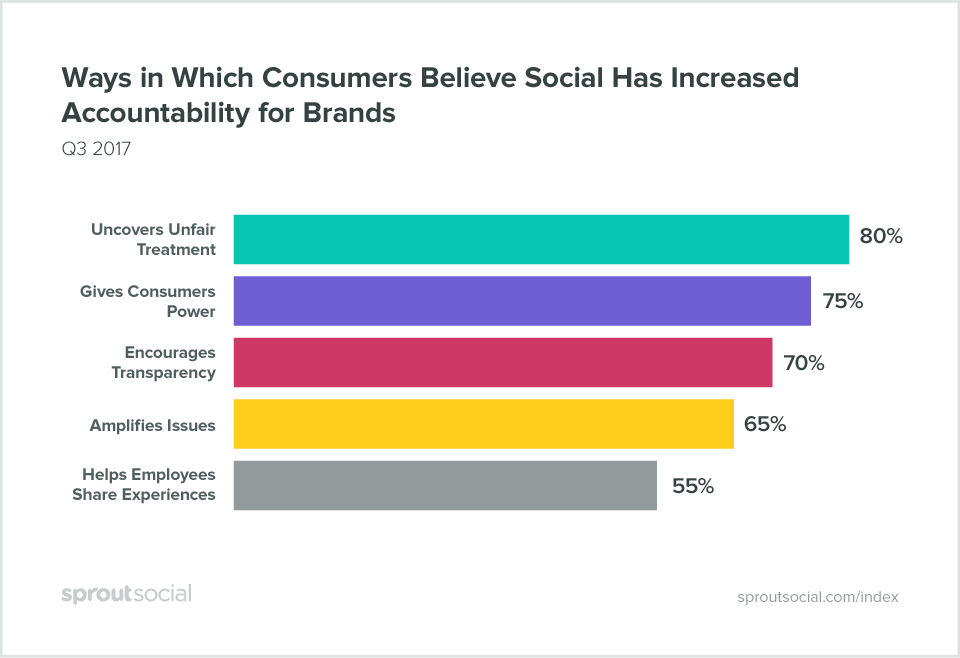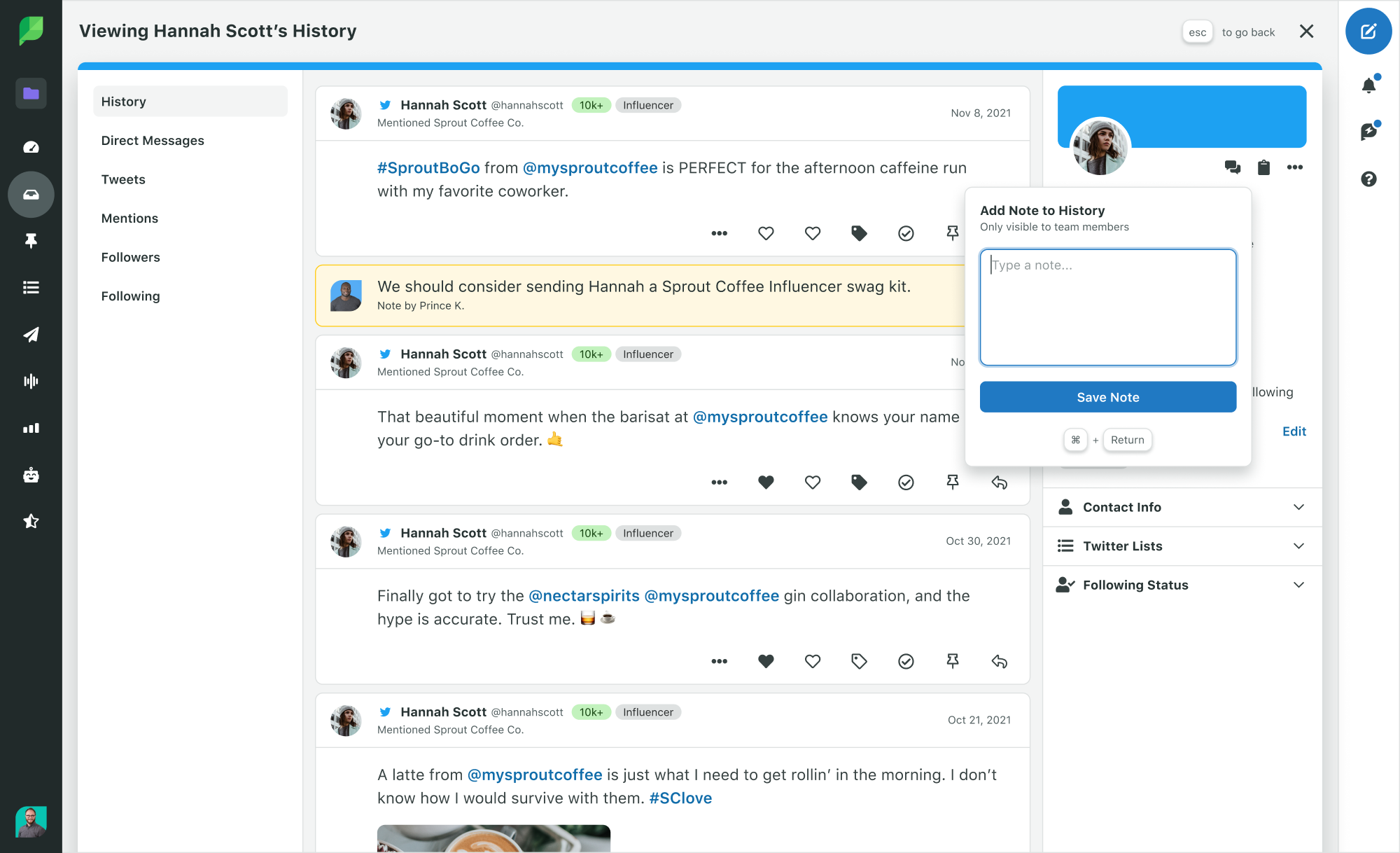5 Ways to improve your CRM strategy with social media

Your customers are likely the most critical aspect of your business–so why would you ever take their journey with your brand for granted? And most organizations, rightfully so, would argue that they do care deeply about their customers’ experience. However, when it comes to social media, customer relationship management (CRM) isn’t always a high priority for many.
Putting aside or even worse, completely leaving out social media in your CRM strategy can have serious repercussions on your brand. An exceptional brand experience is what gets consumers to refer to others and ultimately come back again. And anything negative in that journey will certainly come back to haunt your bottom line.
Social media CRM tools make it possible to track, benchmark and engage with customers across social platforms to provide better experiences. While your business might have CRM tools for other areas of your marketing department, you cannot leave out social media.
That’s why we’re here to show you the five ways your brand can improve your CRM strategy with social media:
1. Break up Your Organization’s Silos
If you’re looking to improve your CRM strategy through social media, the first thing you have to do is break down your organization’s silos. Instead of marketing holding all the cards to your strategy, it’s critical to get sales, social media teams and customer support all together on the same page.
Far too often brands silo their social media efforts and provide poor customer journeys when someone asks a question the marketing team doesn’t know. Instead, brands have to work on breaking silos and improving task management.

A comprehensive social media CRM tool will help you task specific conversations to customer support, sales inquiries or marketing opportunities. According to the Sprout Social Q1 2017 Index, only 1 in 10 social media messages to brands receive a response.
While data shows being unresponsive is not the worst action your brand can take, it is important to see 21% of millennials will unfollow a brand due to a bad experience. It’s also worth noting this age group is twice as likely to use social to communicate with a brand, rather than phone or email.
If you want to create better experiences, you have to be ready to communicate through social media. And for many organizations, it helps to work in one platform, so you can task questions, comments and inquiries to the appropriate team.
Have our support team help you out, Libby. Send them a report about this here https://t.co/lt6jePoenY. ^gl
— Canva (@canva) September 5, 2017
Don’t let questions go unanswered because your sales team doesn’t really work with your social media and community managers. Work together to increase your CRM strategy through better task management and assignment.
2. Track Every Stage of the Customer Journey
Whether it’s education or advocacy, your customer journey should be tracked the entire way. Much like a long-term relationship, your CRM strategy must invest in the future. That means tracking conversations, likes and other engagement metrics is essential to building a long-term relationship.
It’s not all about getting new customers through your social media channels. Instead, your brand has to learn how to foster current relationships, continually provide value and be at the top of mind for customers.
That’s why it’s so important to track your buyer journey through each stage. As consumers grow with your brand, what does it take to change one-time customers into fans and then into advocates?

Having a detailed social conversation history is a great way to start. That way your brand can consistently communicate at the same level through a customer’s experience. This is the same reason why so many customer service teams work off customer profiles.
It helps those in support know where a person is in the buyer journey, previous interactions and what might have been the issue before. With this information, your support (or social team) has valuable context around your brand’s relationship with customers, leads and prospects.
Through the customer journey, engage your audience when they really need you. This doesn’t mean you “like” an Instagram image where a customer mentions you. Instead, try to engage or interact to show your brand’s human side. Connecting with your customers at each step of the journey is vital to your social CRM strategy and your brand’s overall success.

3. Respond Faster to Customer Complaints
Social media allows brands to engage with consumers in real time, at scale. That doesn’t mean just engaging with people who compliment or praise your company. If you want to avoid losing customers, your brand has to respond to negative sentiment at a faster rate as well.
As we’ve discussed, a great CRM strategy meets and greets consumers at every part of the buyer journey. So unfortunately, that means you cannot ignore the negative comments and engagement from others.
We all know people like to complain to brands on social media. In fact, our Q3 2017 Index discovered 46% of consumers have called out a brand on social already. Why do so many people turn to social for negative sentiment?

Sprout found 4 in 5 consumers believe social media has made brands more accountable for its business actions. On top of that, 55% of consumers think a call out will turn into a resolution or response.
Increasing your response time to consumer complaints is one of the simplest ways to improve your CRM strategy. Consumers don’t want to wait around for a response and understand at some level, the message they send is going to most likely be read by someone.
That’s why you need a powerful social CRM tool. Sprout Social provides more than a simple reply screen. Instead, we allow brands to access conversation history, contact details and other critical information every time you reply.

Social is just one part of your brand experience, but it can sometimes be your most valuable. Through easier CRM management, you can turn a lot of negative sentiment into at least somewhat positive experiences. The last thing you want is to lose customers because you failed to respond to a negative Tweet or Facebook post.
4. Uncover Potential Customers Through Keywords & Hashtags
Keyword and hashtag analysis is truly one of the best ways for brands to discover conversations, mentions and even users. Most of the time, this analysis helps brands locate opportunities they would have never found through native social platforms.
More specifically, hashtags allow users to categorize content and make it easier for others to locate. But what about when users simply mention brands without an @mention, hashtag or even correct spelling?

These engagement opportunities go by the wayside and have a much smaller chance to get an answer or response from your brand. Analyzing specific keywords and hashtags ultimately allow your brand to locate potential customers who might not have fallen through the traditional sales funnel.
Instead, brands should follow these useful tricks to find off-the-radar customers:
- Track branded keywords: Your branded keywords are nearly as important as tracking your own company name. Some keywords or hashtags can become a part of your brand without you realizing it. However, staying on top of these keywords can uncover a plethora of potential customers directly mentioning you that aren’t picked up through @mentions.
- Track misspellings of your brand: Always look for common misspellings of your brand name to find users who are trying to reach you or even make a purchase. If your brand has an unique handle in anyway, track all the common spellings and uses of your brand name on social.
- Track industry keywords: What are the industry terms your audience search for and use on social? Analyzing your industry keywords can uncover terms where your potential customers engage. Deep keyword analysis should help you find these conversations and users.
- Competitor keywords: See what keywords are driving engagement with your competitors to better your engagement strategy. This is a great opportunity to find customers trying to interact with competitors.

5. Maintain Your Brand Voice Across Channels
Last but not least, it’s smart to keep a consistent brand experience across all your social channels. And to do this, you need to maintain your brand voice and social interactions. Consumers are easily turned away if, for example, one of your social channels were to be responsive and caring with incoming questions and have another completely silent.
Maintaining a consistent brand voice helps you drive your overall identity. Your customers will not be shy to call out your brand if there are disparities between things like brand beliefs or ideas. In fact, Contently discovered 66% of consumers believe they’ve been misled or tricked by a brand through sponsored content.
For example, Air Canada consistently brands itself as a proud product of the nation and by serving its people. Through Instagram and Twitter, the brand boasts its history, passion and willingness to explore and travel.
If the brand suddenly changed its messaging and voice on Facebook, users would have a poor experience and likely fall out of the buying funnel. And keeping that voice controlled isn’t easy, but with the help of a social media style guide and CRM tools, you can ensure everyone is on the same page.

With Sprout, we take pride in our CRM functionalities that let brands set permissions, divvy tasks and create visibility across departments. Our tools are built for the large enterprise business managing hundreds of users, but also the local shop needing only a few.
By using a powerful social CRM platform, you can easily track, monitor and engage with social users to build a better experience. Your customer journey strategy needs continuity and Sprout can help you get there. Try us out with a completely free 30-day trial today!

Share